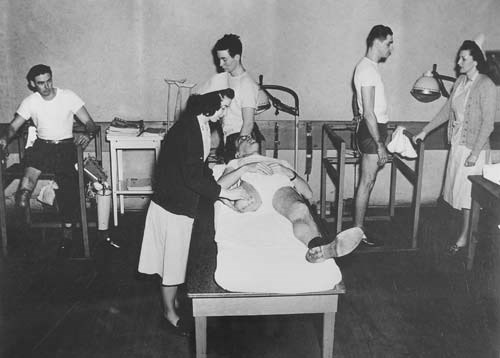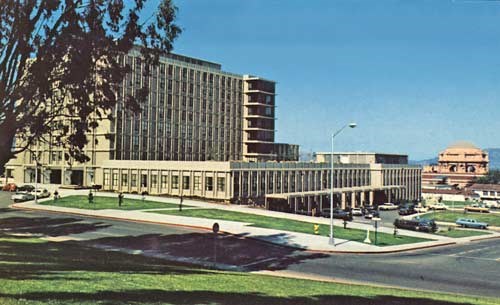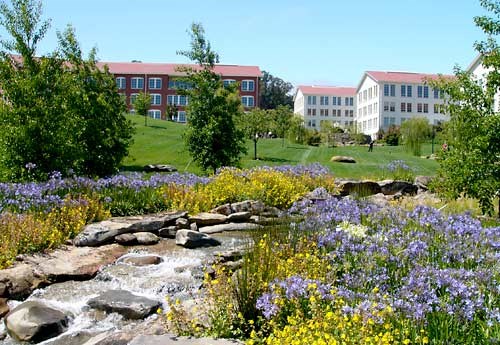|
During World War II, Letterman's location made it the most important hospital for the treatment of sick and wounded soldiers from the Pacific Theater. The statistics are staggering—in 1945 alone Letterman General Hospital received more than 73,000 patients. Towards the end of the war, a small stockade for Italian and German prisoners was established at Letterman; these POW’s provided labor for the hospital during their brief internment.

By the Vietnam era, the Army began planning for a more modern hospital and opened a new ten-story, 550-bed facility in 1969. The new Letterman Army Medical Center trained a quarter of the Army's medical specialists and served soldiers wounded in Vietnam throughout the 1970’s. In 1971, the adjoining Letterman Army Institute of Research opened to promote development of artificial blood, laser physics, and the treatment of trauma. During these years, the Army began demolishing parts of the 1899 quadrangle to build housing for nurses and enlisted men; the remaining historic buildings housed support services. By the late 1980’s, Letterman served mainly military retirees and their dependents. Following the transfer of the Presidio to the National Park Service, both the hospital and the research institute were deactivated in 1995. 
Bob Bowen Collection As part of an ongoing effort to make the Presidio a financially self-sufficient National Park, the Presidio Trust entered a contract with Lucasfilm to redevelop twenty-three acres of the Letterman Hospital region on the northeastern side of the Presidio. The new Letterman Digital Arts Center was designed to resemble the historic Presidio architecture. It is home to a number of Lucasfilm divisions including Industrial Light & Magic and LucasArt. Though most buildings are closed to the public, the beautifully landscaped great meadow area is open to the public. Letterman Digital Arts Center is a partner in the continued preservation of the Presidio of San Francisco. 
National Park Service Pages: 1 2 |
Last updated: February 28, 2015
Success
Thank you. Your feedback has been received.
Error
alert message

